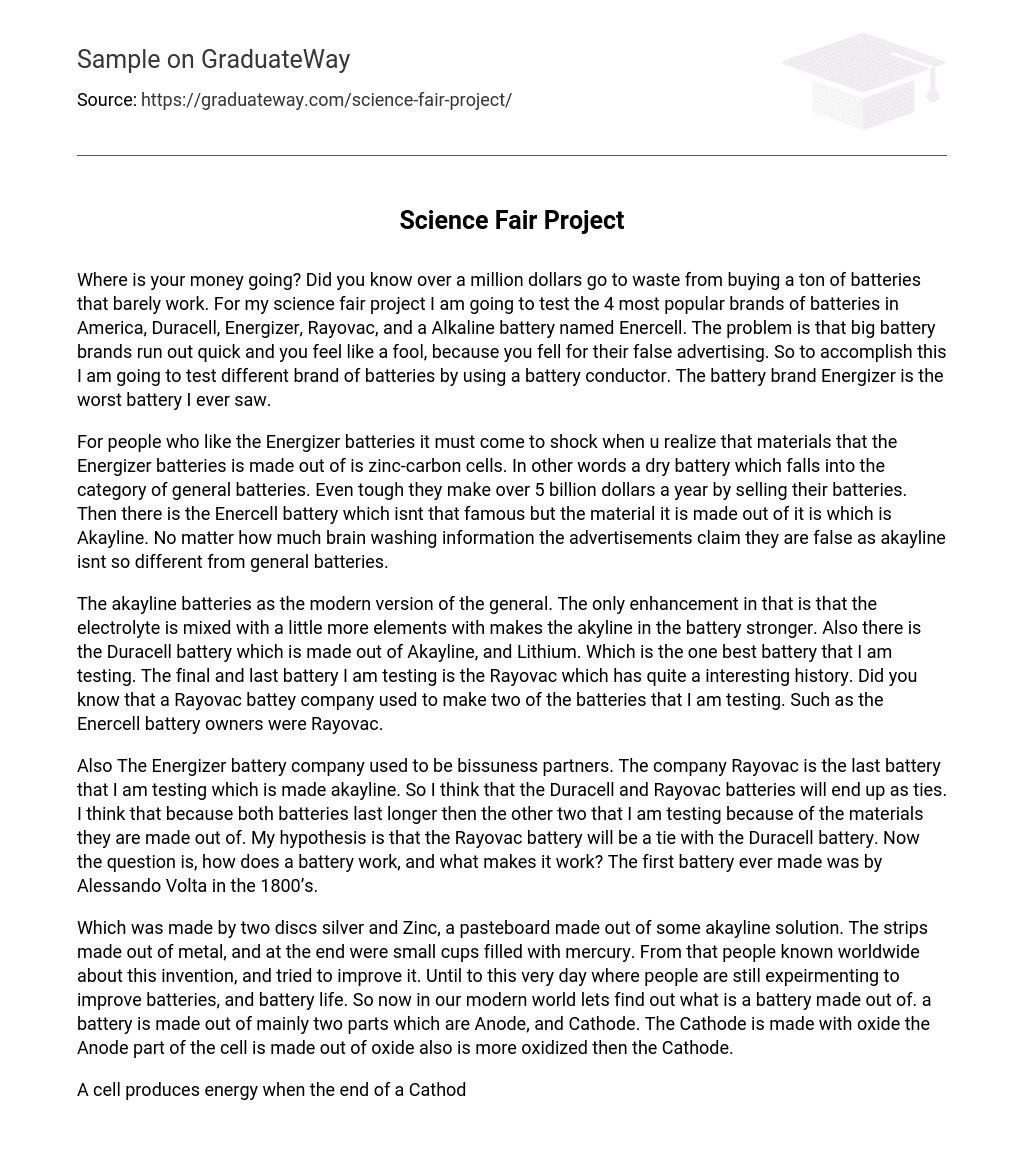Where is your money going? Over a million dollars are wasted on purchasing a ton of batteries that barely function. I will test the four most popular battery brands in America, namely Duracell, Energizer, Rayovac, and Enercell. The problem lies in the fact that major battery brands deplete rapidly, making you feel foolish for being deceived by their false advertising. To tackle this issue, I will conduct tests using a battery conductor to compare various battery brands. Among all the batteries observed so far, the Energizer brand proves to be the poorest.
Energizer batteries, although popular among fans, are actually made of zinc-carbon cells. These batteries belong to the general battery category and generate over 5 billion dollars in annual sales for Energizer. In contrast, Enercell batteries, made of akaline, have a notable distinction. Despite advertising claims, akaline is not significantly different from general batteries.
The akayline battery is a modern version of the general battery, with the only enhancement being the addition of more elements to strengthen the electrolyte. Another battery option is the Duracell, which is made of akayline and lithium. This is the best battery that I am currently testing. Lastly, there is the Rayovac battery, which has an interesting history. Interestingly, Rayovac used to manufacture two of the batteries I am testing, including the Enercell battery.
The Energizer battery company and Rayovac used to be business partners. Currently, I am testing the last battery, Rayovac, which is made of alkaline material. Therefore, I believe that the Duracell and Rayovac batteries will have comparable performance. This belief is based on the fact that both batteries outlast the other two batteries I am testing due to their respective materials. My hypothesis is that the Rayovac battery will be on par with the Duracell battery in terms of longevity. Now, the question arises: how does a battery function and what enables its operation? Alessandro Volta created the first-ever battery in the 1800s.
The initial battery design included two silver and zinc discs, along with an alkali solution pasteboard. Metal strips were inserted, featuring small cups filled with mercury at the ends. This invention gained global recognition, sparking numerous efforts to enhance it. Even today, individuals persist in experimenting and improving batteries and their longevity. Hence, let’s delve into the composition of a battery in our modern society. Essentially, a battery comprises two main parts: the Anode and the Cathode. The Cathode is created using oxide material while the Anode is also composed of oxide but exhibits higher oxidation levels compared to the Cathode.
The process of generating energy in a cell involves the combination of the Cathode and Anode with an electrolyte, which is a substance that conducts energy. This combination attracts oxygen atoms to the Anode, resulting in the creation of an electric current. Various types of batteries utilize different electrolytes, such as lithium or alkaline electrolytes. While other elements also contribute to the efficiency of the cell, the type of electrolyte utilized is considered the most critical factor. To conduct battery testing, you will need several materials commonly found in households: D-Size Energizer battery, D-Size Duracell battery, D-Size Enercell battery, D-Size Rayovac battery, a basic small bulb, a D-Size battery holder, a stop watch, and tape. For this experiment’s purposes, four D-Size batteries along with a battery holder and small light bulb are required. The estimated cost for these materials should not exceed 15 dollars. These previous statements describe preliminary trials conducted on the cell before reaching its final conclusive trial.
In the second trial, the Duracell battery lasted the longest, while the first trial resulted in a tie. Therefore, for the final trial, I will conduct a precise experiment to determine the battery’s duration. The first battery tested, Energizer, lasted for 6 hours and 35 minutes. The second battery tested, Duracell, lasted for 22 hours and 15 minutes. The third battery tested, Enercell, lasted for 15 hours and 2 minutes. Lastly, the Rayovac battery tested lasted for 24 hours and 30 minutes.
Out of the four tested battery brands, it was discovered that the Rayovac battery had the longest lifespan, which contradicted my hypothesis that the Rayovac and Duracell batteries would last equally long. The experiment concluded when all batteries were fully drained. To visually represent each battery’s lifespan, I generated a graph. Ultimately, it became clear that the Rayovac battery had the longest duration.
Despite my oversight in initially recognizing the composition of the Rayovac battery, it turned out to be made of Lithium Ion, the most potent energy source on the market. This discovery had no impact on my experiment’s progress or outcome. In future repetitions, I may consider conducting more trials and rigorous testing. However, I do not deem this additional experimentation essential since had I been aware of the presence of Lithium Ion in the Rayovac battery, I would have already anticipated its superiority.





